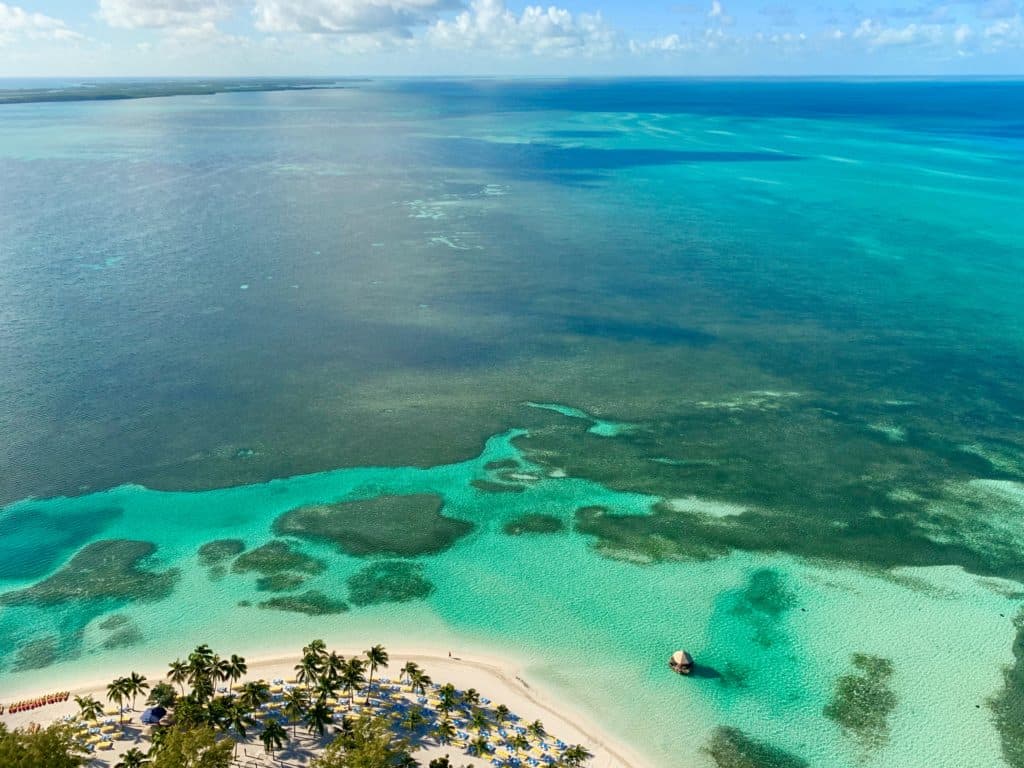Destination Stewardship Report – Summer 2023 (Volume 4, Issue 1)
This post is from the Destination Stewardship Report (Summer 2023, Volume 4, Issue 1), a publication that provides practical information and insights useful to anyone whose work or interests involve improving destination stewardship in a post-pandemic world.

The crystal clear waters and the natural beauty of the Bahamas Family Islands continues to attract visitors from all over the world. [Photo by Jorge Fernando]
The Bahamas Destination Stewardship Initiative: A Conversation
The Bahamas Family Islands have created not one but four destination stewardship councils and consistent communication, collaboration, and community engagement has been the key to their success. In 2023, the Bahamas Destination Stewardship Initiative won the Caribbean Tourism Organization’s Destination Stewardship Award. GSTC Program Director Kathleen Pittman discusses the initiative with Janel Campbell, Senior Project Manager at The Bahamas Ministry of Tourism.
Kathleen Pittman: Congratulations to The Bahamas Family Islands on this prestigious CTO Award. Why is destination stewardship so important to the Ministry of Tourism and communities in The Bahamas?
Janel Campbell: The COVID-19 tourism stoppage hit local communities especially hard. The Ministry of Tourism has long prioritized empowering communities to take a greater leadership role in the development and management of tourism within their communities. Harnessing tourism for good and getting this recovery right is a top priority for the Family Islands, and the recent fiscal crisis has made a boot-strapped, cross-sector, and everybody-come-to-the-table approach more critical than ever before.
Tell us about The Bahamas Destination Stewardship Initiative.
The Bahamas partnered with GSTC in June 2020 to provide structural support and training to establish Destination Stewardship Councils (“DSCs”), following GSTC Destination Criterion A1. The Tourism offices on each island initially acted as the Council Secretariat, guiding them in GSTC-led orientation, stakeholder mapping, and preparations for Council establishment. Through webinars, Councils are exposed to capacity building in tourism planning and development. The Ministry of Tourism has provided seed funding for the first projects that the Councils could then leverage to seek additional financial support. This approach has put communities in the driver’s seat for rebuilding tourism on their terms. It also boosts resilience to future shocks, including regular changes in government, by putting civil society at the helm of destination stewardship.
Which islands have installed Destination Stewardship Councils, and how did these communities recruit the wide-ranging stakeholders needed for a thriving Destination Stewardship Council?
Four of The Bahamas Family Islands have Destination Stewardship Councils thus far: Eleuthera, Exuma, Harbour Island, and South Andros / Mangrove Cay. GSTC’s Stakeholder Mapping Tool was used to identify the many stakeholders across government, private sector, and community leaders we wanted to bring to the table. They were invited to a GSTC training and orientation on destination stewardship and DSCs, which piqued the interest of many. Once we had some core champions involved from each sector, and once they identified priorities from the GSTC Destination Criteria for their Councils to advance, they conducted targeted outreach to bring more organizations and community members to the Council.
Council Priorities identified aligned with various GSTC Criteria such as D9 which involves sustainable solid waste management, B7 focusing on the safety and security of visitors and residents traversing the streets, and C3 focused on the protection of intangible cultural heritage through documentation of destination history by consulting elders within the community.
What are some of the positive outcomes you and the communities are most proud of so far?
We at the Ministry of Tourism envisioned what success would look like at this early stage of the project, and we are very pleased with the progress. Four independent Destination Stewardship Councils are robustly operating on our islands with wide cross-sector stakeholder representation and partnerships. In addition to legally incorporating and effectively branding themselves and regularly engaging their community members, the Councils are well on their way with a mix of short- and longer-term projects that advance the GSTC Destination Criteria in their communities.

The volunteer crew from a recent community clean up project. [Photo courtesy of Ocean Aid 360]
A year after forming, the Councils instituted simple monitoring and evaluation indicators to measure their performance in key areas based on input from their membership. The results of that exercise were positive, also yielding recommendations for improvement, which the Councils are following. The monitoring indicators focus on the level of stakeholder engagement, Council stability, and effectiveness of capacity-building exercises conducted during the project. The indicators are standardized across Councils, which further enhances communication and collaboration among Councils as well as good practice sharing and troubleshooting support where needed. The monitoring indicators also serve as a ready data set for Councils to communicate progress to external audiences, including actual and potential donors and the public. Importantly, the progress measurement has helped the Councils identify areas where their members would like to see improvement and keeps communities and membership at the center of decision-making, which is fundamental to the sustainability of this effort.
Lastly, I’ll mention that we bring the Destination Stewardship Councils together every six months for a Conclave to share their progress, challenges, and lessons learned. This peer-to-peer sharing has been tremendously valuable to inspire, energize, and mentor each other. Every presentation from the Councils at the Conclave spark pride in communities taking ownership of destination stewardship and accomplishing so much in so little time, and I am confident the best is yet to come.
You said the best is yet to come, what can we expect next from The Bahamas Destination Stewardship initiative?
Involvement and empowerment of tourism stakeholders in decision-making about their community development and management are at the heart of The Bahamas Destination Stewardship Initiative. The initiative engages cohorts of Family Islands on a staggered basis—so we can replicate and scale the approach, applying lessons learned. Currently, we are continuing the support of the original cohort of Councils, while working with GSTC to build capacity for the launch of an additional four Destination Stewardship Councils this year. We hope to work with yet a third cohort of Family Islands to set up Destination Stewardship Councils after that—with the aim of supporting as many communities as are ready within The Bahamas to adopt and become part of our growing network of communities taking charge of their community’s development, practicing responsible tourism and encouraging environmental conservation for better stewardship of their patrimony and preservation of that patrimony for the next generation.




